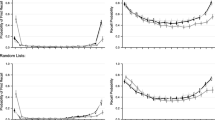Abstract
Two experiments were designed to test whether the memory impairment induced by benzodiazepines (BZDs) is due to impaired memory for temporal context. In both experiments, subjects were administered either diazepam (15 mg oral) or placebo, and a standard BZD impairment on prose recall as well as a decreased subjective arousal was found. Key tasks to explore temporal context memory were an A-B A-C proactive interference paradigm and a list discrimination task. Initial learning of both groups on these tasks was broadly matched. In experiment 1, diazepam did not increase susceptibility to proactive interference using semantically related words. However, in experiment 2, using unrelated word pairs, diazepam markedly increased the number of prior list intrusions. Furthermore, after diazepam intake, subjects were clearly impaired in learning unrelated word pairs. Subjects after diazepam intake were not impaired in the list discrimination task. We conclude that (1) diazepam impairs the forming of new associations, whether this is the formation of links between two or more targets or between targets and context, (2) a temporal context encoding deficit cannot account for a broader diazepam-induced memory impairment.
Similar content being viewed by others
Author information
Authors and Affiliations
Additional information
Received: 18 March 1997 / Final version: 24 July 1997
Rights and permissions
About this article
Cite this article
Gorissen, M., Curran, H. & Eling, P. Proactive interference and temporal context encoding after diazepam intake. Psychopharmacology 138, 334–343 (1998). https://doi.org/10.1007/s002130050679
Issue Date:
DOI: https://doi.org/10.1007/s002130050679



